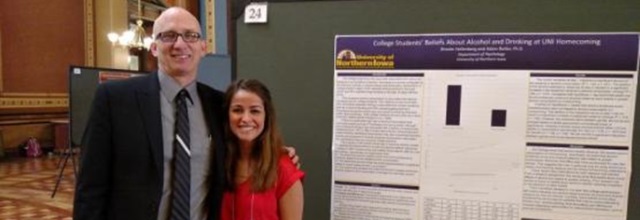Honors Program Theses
Award/Availability
Open Access Honors Program Thesis
First Advisor
Darrell Wiens
Keywords
Homocysteine--Physiological effect; Neural crest; Cell migration;
Abstract
At elevated levels the amino acid homocysteine has been linked to defects such as spina bifida and improper septation of the outflow tract of the heart. Neural crest cells (NCCs) originate from the neural tube (which forms from fusion of neural folds and will become the spinal cord), disassociate from their neighbors, and migrate throughout the body to form many essential structures. N-cadherin, a cell adhesion protein expressed on the surface of neural tube cells of the early embryo, plays a major role in cell shape change, long-range migration, and communication. α-catenin is a member of the cadherin adhesion complex and can bind actin to modulate the cytoskeleton. RhoB, a Ras GTPase, expressed in NCCs as they migrate may play a role in their disengagement and migration. Because homocysteine is known to increase cell migration it is possible that it alters the expression and function of N-cadherin, rhoB, and/or α- catenin. To test this hypothesis the region of the neural tube that contributes to the aorticopulmonary septum, tunica media of several pharyngeal arch arteries, portions of the valves of the heart, and conduction system was excised from HH stage 10-13 chick embryos and cultured for 24 hours. One group of these explants was exposed to 100 µM D,L-homocysteine thiolactone while the other was left untreated (control). Explants were then fixed, immunostained with antibodies to N-cadherin, rhoB, or α-catenin and were subjected to color thresholding image analysis to determine the area of cells positively stained for antibody expression. N-cadherin expression was not consistently affected by homocysteine treatment as assessed by the thresholding method, but images suggested an increase in staining intensity with homocysteine treatement. Preliminary data on rhoB expression did not provide quantitative evidence of alteration with treatment. Preliminary results for α-catenin suggested that although its overall expression level is not significantly altered by homocysteine, cells seen in the transition zone had greatly reduced α-catenin. A 10% increase was observed in cell migration distance compared to controls. In vitro therefore, elevated homocysteine can be linked to an increase in NCC migration distance, which cannot be explained by altered expression of N-cadherin, but may involve other adhesion complex proteins.
Year of Submission
2007
Department
Department of Biology
University Honors Designation
A thesis submitted in partial fulfillment of the requirements for the designation University Honors
Date Original
5-2007
Object Description
1 PDF file (41 pages)
Copyright
©2007 Kacie Rae Callaway
Language
en
File Format
application/pdf
Recommended Citation
Callaway, Kacie Rae, "The Effect of Homocysteine on Neural Crest Cells, N-cadherin, and its Binding Partners" (2007). Honors Program Theses. 655.
https://scholarworks.uni.edu/hpt/655




Comments
If you are the rightful copyright holder of this thesis and wish to have it removed from the Open Access Collection, please submit a request to scholarworks@uni.edu and include clear identification of the work, preferably with URL.